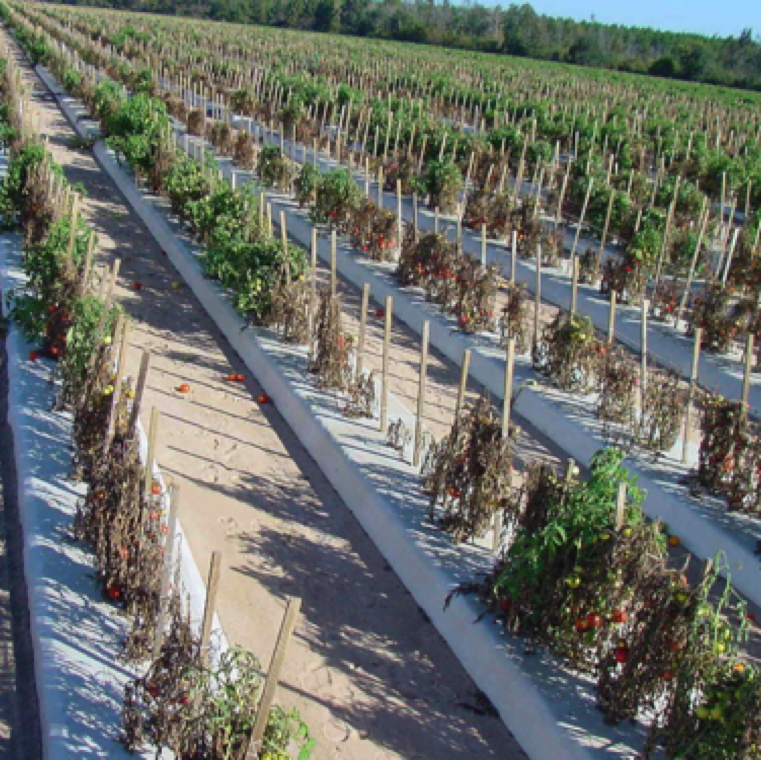

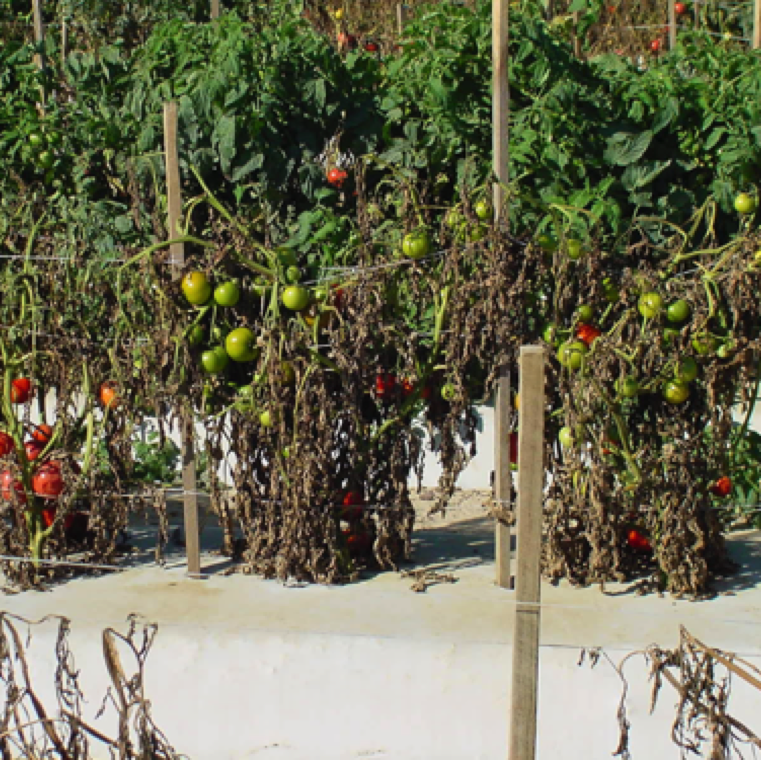
Bacterial wilt can cause spotty to complete destruction of tomato in the presence of the high levels of the bacterium in soil. The bacterium can spread easily through contaminated irrigation water.
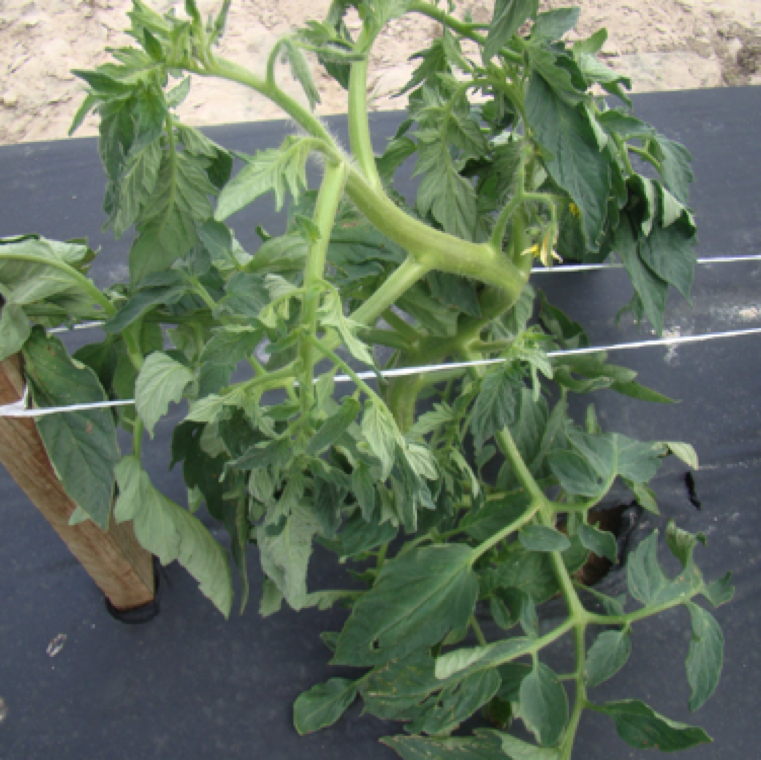
Early signs of wilting include drooping of leaves during hotter times of the day, but the plants will continue to recover for some days before wilting with no recovery.
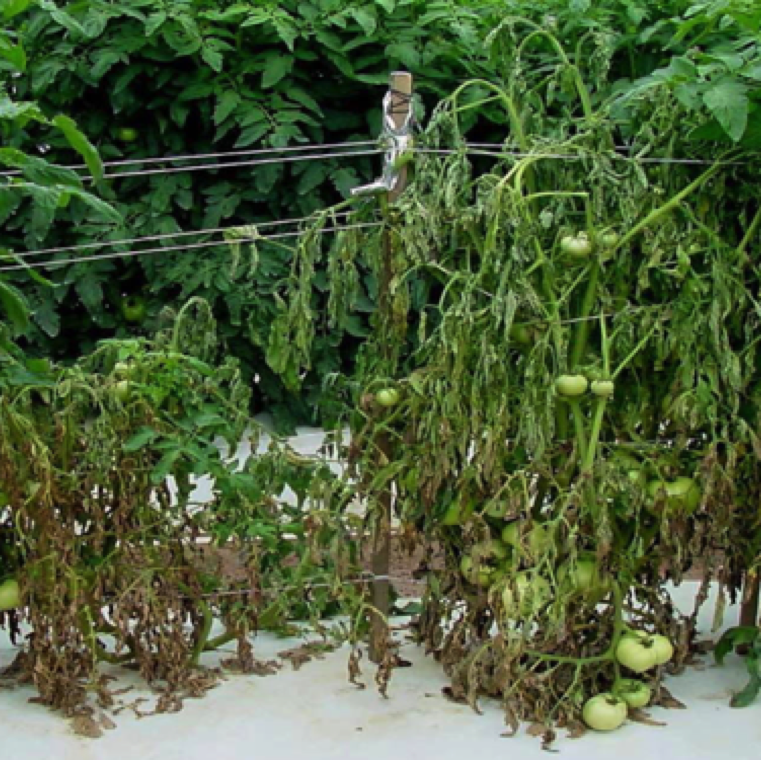
Upper leaves of wilted plants tend to remain green. Fusarium wilt/crown root rot and Verticillium wilt can also cause similar symptoms but plants in these cases showing yellowing of leaves.
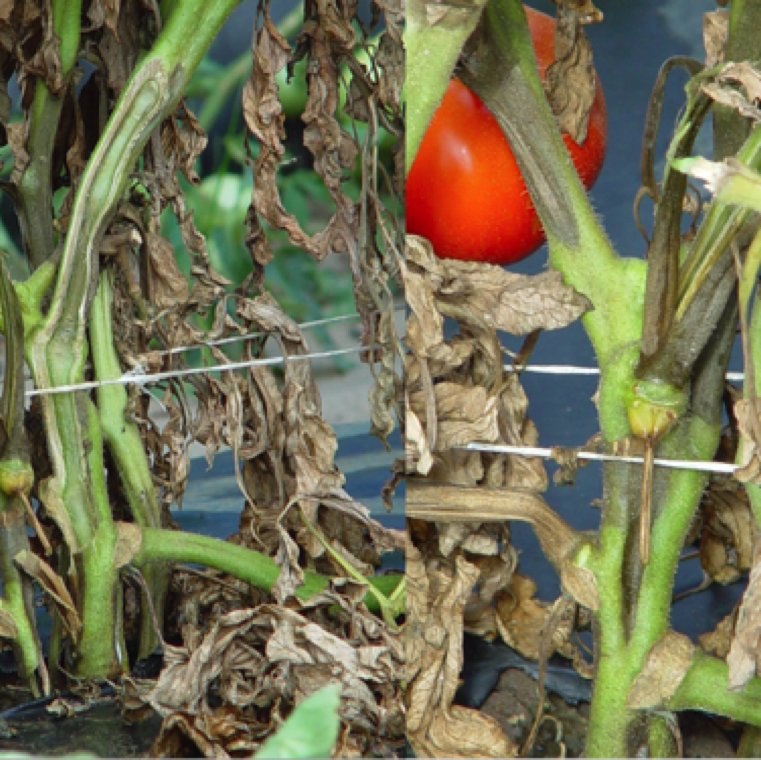
Discoloration of the vascular system. Fusarium wilt/crown root rot and Verticillium wilt can cause similar symptoms. Surface of the stem may darken and collapse as in case of pith necrosis.

Bacterial ooze from a freshly cut stem. This is unique to bacterial wilt and pith necrosis, and is not seen in case of Fusarium wilt/crown root rot and Verticillium wilt.
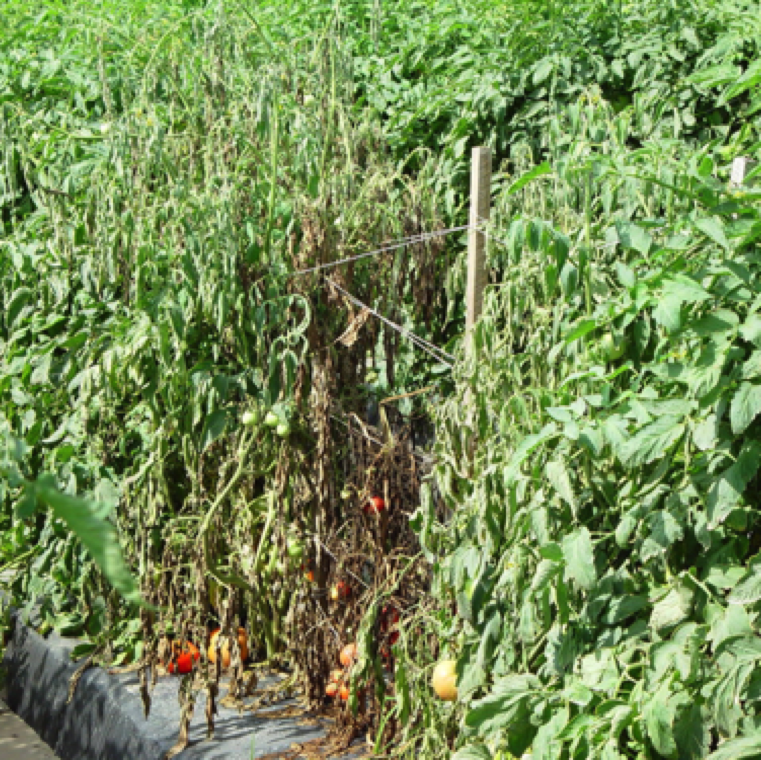
Secondary spread of bacterial wilt through water movement to adjacent plants on both sides from an infected plant can be noticed at times.
BACTERIAL WILT
Bacterial causal agent: Ralstonia solanacearum
Tomato diseases

